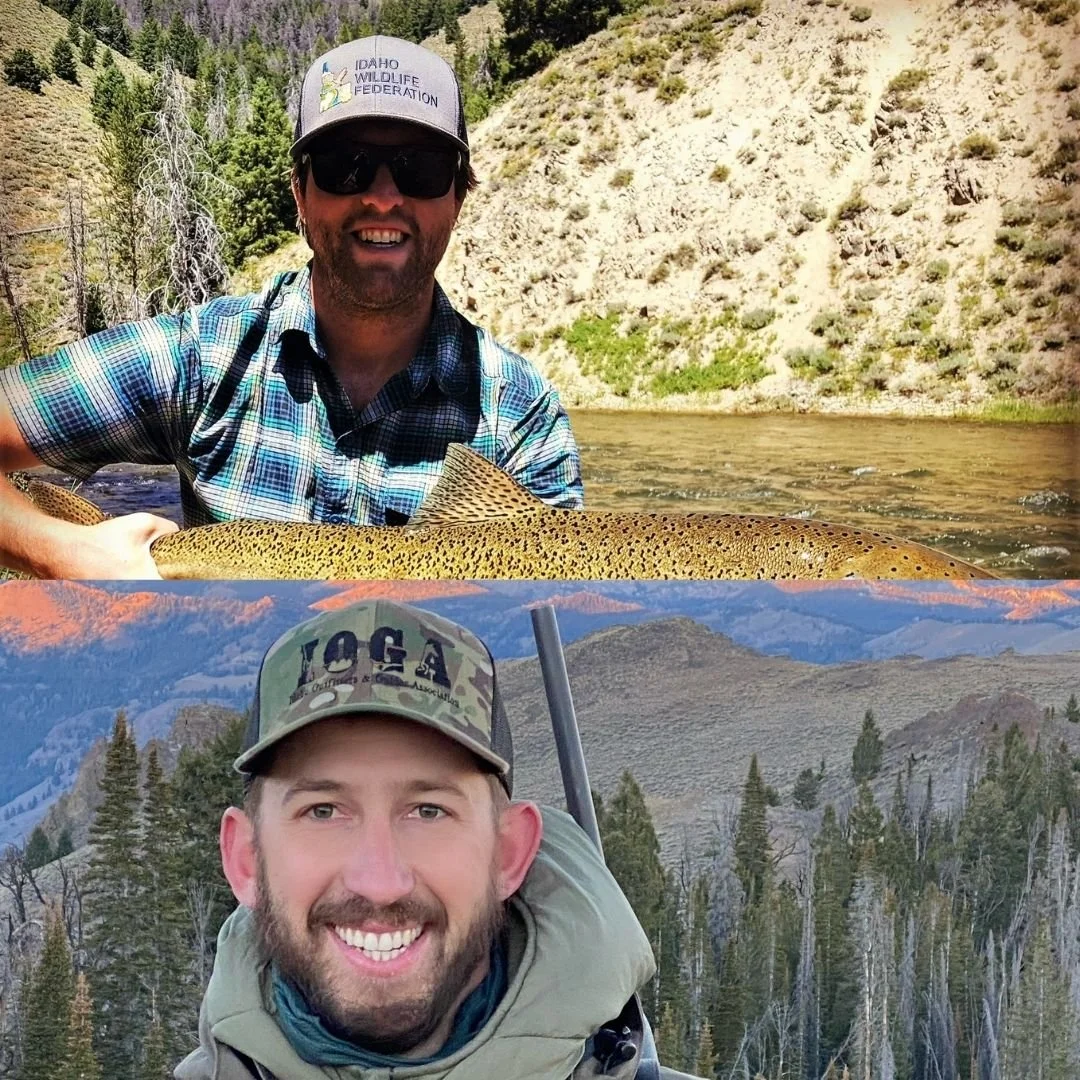PODCAST: The Trials and Tribulations of Salmon and Those Doing the Arduous Work to Help Them Recover with Brian Brooks and Aaron Lieberman
“This could be the biggest restoration project in human history, we can forestall the extinction of a key stone species.”
This weekend, don’t miss the opportunity to check out Idaho WIldlife Federation’s Exectuvie Director Brian Brooks and Idaho Outfitters and Guides Association Executive Director Aaron Liebrman on the National Wildlife Federation Outdoors podcast.
LISTEN TO THE PODCAST
Aaron and Bill of National Wildlife Federation Outdoors revisit salmon conservation in the northwest in advance of nationwide day of action asking for immediate action and the removal of the four Snake River dams. They talk salmon conservation broadly, the history of salmon issues in the Northwest and how we got to this point, the recent processes to address the issues surrounding dam removal and salmon recovery, how the Snake River system dams are different from dams in places like Tennessee, and how the sporting community can engage to save this iconic species from extinction.
Links:
General Links
Congressman Simpson’s leading page on the CBI: https://simpson.house.gov/salmon/
Inslee Murray Study site (including comment links): https://www.lsrdoptions.org
White House Press release (3/18/22) re: Dams/Fish/Tribes: https://www.whitehouse.gov/ceq/news-updates/2022/03/28/columbia-river-basin-fisheries-working-together-to-develop-a-path-forward/
Idaho Wildlife Federation links:
IOGA Links:
IOGA’s Action Page: https://ioga.org/the-columbia-basin-initiative/
Alternatively, here’s a link directly to the Out of Idaho action form: https://actnow.io/EdVJdCS
Link to Donate in Support of IOGA’s advocacy for Idaho Salmon & Steelhead: https://www.paypal.com/donate/?hosted_button_id=SY9ZJ352VZMYE
Link to sign up for IOGA’s newsletter to stay in the loop on the work: Subscribe
Show notes:
3:55 – A little background on both guests.
5:14 – What have these gentlemen been doing outdoors recently? Gobble gobble…
10:54 – Jumping into why we are here – SALMON!!
11:33 – Brian Brooks shares a salmon adventure story.
14:03 – Aaron shares a salmon story that he enjoys sharing with his clients on the river.
15:46 – After a long intro, we get down to the big questions:
WHY ARE WE HERE? HOW BAD IS IT? WHAT ARE WE LOOKING AT?
19:28 - What these dams do. Where they are at. How they constrict fish movements. An overview of the multiple factors which are affecting these fish runs.
25:35 - The journey back to Idaho… salmon become tanks!
27:27 – Well, why the Snake River dams?
30:15 – Aaron shares how the low salmon returns affect his lifestyle as a fly fishing and rafting guide.
36:01 – Brian highlights the importance of the Chinook Salmon season for the small town of Riggins, Idaho.
37:51 – Aaron H. brings up somethings to consider regarding outdoor recreation and the connection between the economy in Idaho and the U.S.
41:25 - Picking apart what removing the dams would entail.
42:47 – What is the difference between removing dams in places like Tennessee versus removing the four lower Snake River dams?
47:34 – “This should be a no brainer…”
49:30 – “Both the heartening thing and also the deeply frustrating thing about this particular issue is we can do at least the primary thing we need to do in order to restore salmon and steelhead; and we can do so without negatively impacting the people who are most dependent on the current system.”
51:12 – Short break for a message from our partner podcast, Artemis Sportswomen. Please be sure to follow NWF Outdoors on Facebook, Instagram and Twitter for more great content!
53:07 – Unpacking the details regarding the Simpson plan, the solution and five things the sporting community and others can do to work together and get this done.
56:22 – The three realities in Simpson’s plan.
57:47 - The investments and assurances that are necessary in order to seed all three components of the plan.
1:01:37 – Top level components that still need to be addressed.
1:03:15 – How would they remove the dams? $1.5 billion to breach all four dams.
1:04:45 - What can people do to help? If you’re in the northwest, REACH OUT TO YOUR SENATORS.
“At the end of the day, it’s a taxpayer issue…”
This process
1:09:46 - Figuring out how to replace the benefits of the dams.
1:12:24 - At the end of the day we are going to have to deal with this issue as a nation. It will have to be an act of Congress. We are at the first few steps of leaving part A in this plan.
1:17:45 - We want legislation, right?
1:19:19 - We should dream big. “This could be the biggest restoration project in human history, we can forestall the extinction of a key stone species.”
1:21:23 - Getting these dams down is just the start, we will still have more work to do. This is an ongoing project.
1:23:10 - Closing statements.

